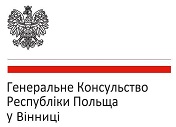Практичні виклики та реальні потенції е-демократії: український варіант
Ключові слова:
e-democracy, e-governance, e-participation, e-petition, digital inequality, information-communication technologiesАнотація
The article analyzes the peculiarities and problems of introducing e- democracy in Ukraine. It is noted that separate e-democracy tools, namely, e-reception of the mayor, possibility to submit e-appeals, holding on-line polls etc. have been introduced in many cities of Ukraine. A common e-appeal portal, “e-parliament” have been created, the system of e-petitions has been introduced.
The article looks into the development of e-democracy in the context of four components: transparency, accountability, civic education and e-participation.
Attention is drawn to the fact that under certain circumstances e democracy may become an imitation of democracy, a technology for manipulation. It is stated that introduction of e-participation tools alone does not guarantee their wide usage by the population, and what is most important – their usage with the aim of causing quality changes in governance. That is why a very important task is to raise the level of civic education with regard to e-democracy. This may be proved by the results of the first year after the introduction of the system of e-petitions to the central bodies of executive power and the single system of local petitions in Ukraine. Many of the submitted petitions either contradicted the norms of Ukrainian legislation or were sent to those bodies of power, which are not competent to solve the issue.
The article draws attention to the problem of digital inequality, i.e. the level of Internet access among the citizens of Ukraine. According to different evaluations, form 14 to 26 million people are active Internet users in Ukraine, and from21% to 29% of those constantly visit the sites of the bodies of power and local self- governing. Even though a mass introduction of various electronic services may be observed, it is also necessary to increase the popularity and the level of trust to electronic systems of the society in general as it is one of the least computerized ones in Europe. According to Google data, a bit more than 60% of Ukrainians are Internet-users.
The authors insist that for effective e-democracy functioning, it is necessary to strengthen the infrastructural component. The existence of the material and technical base is the necessary condition for the development e-literacy among the population, which, in its turn, will lead to their active participation in e-democracy processes. It is obvious that the citizens of Ukraine cannot effectively use the existing and potential possibilities in the sphere of e-governance unless they have the sufficient competence level and have the access to the information-communication technologies.
The article analyzes the situation in which the paradox of creating a “false democracy” arouses, meaning the situation when specialists make an effort to form e-democracy tools and the target group does not know about them, people do not have the necessary competence level for using these resources, there is no interest in using the concrete instruments. So it becomes understandable that attention should be focused on using effective practices of e-democracy functioning, on raising citizen competence and on encouraging them to actively participate in state building through e-democracy, e-participation etc.
It has been determined that in case of uniting the efforts of IT- specialists, public activists and representatives of the authorities and business, a complex evaluation of the needs of modern society and effective mechanisms of e-democracy introduction will be received. Internet- technologies have unbelievable possibilities, and searching for like-minded people online and attracting people to common activity (“crowdsourcing”) may become one of effective mechanisms of introduction of e-democracy instruments. One of the best examples of its usage in Ukraine was the so-called “e-Maydan”.
A conclusion has been made that the existence of considerable restrictions in Internet access (electronic inequality), low level of interest in e-communication the public bodies of power among Internet-users, lack of competence in e-governance and e-democracy, low level of interest among the citizens to e-communication in general; absence of Internet-platforms for mass deliberation and selection of acute sociopolitical issues etc. are all among the problems of implementation of e-democracy. Transparency, decrease of bureaucracy levels, increasing the efficiency of state institutions etc. should be the results of e-democracy introduction.
##submission.downloads##
Опубліковано
Номер
Розділ
Ліцензія
Авторське право (c) 2017 Світлана Денисюк, Валерій Корнієнко

Ця робота ліцензується відповідно до Creative Commons Attribution-NonCommercial 4.0 International License.
Автор, який подає матеріали до друку, зберігає за собою всі авторські права та надає відповідному виданню право першої публікації, дозволяючи розповсюджувати даний матеріал із зазначенням авторства та джерела первинної публікації, а також погоджується на розміщення її електронної версії на сайті Національної бібліотеки ім. В.І. Вернадського, в міжнародних базах даних CEJSH, Index Copernicus, POL-index, Polska Bibliografia Naukowa.

